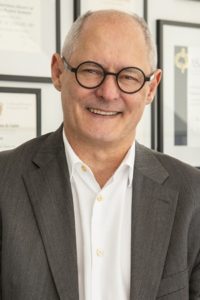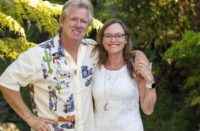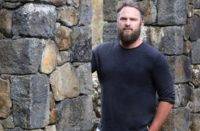 Cosmetic surgery has become increasingly common with many people opting for procedures which rectify ‘flaws’. Some seek to defy the ageing process and preserve facial youthfulness, others wish to enhance the figure or perhaps change a feature which bothers them. Recently, we posed questions to respected Auckland plastic surgeon, Tristan de Chalain.
Cosmetic surgery has become increasingly common with many people opting for procedures which rectify ‘flaws’. Some seek to defy the ageing process and preserve facial youthfulness, others wish to enhance the figure or perhaps change a feature which bothers them. Recently, we posed questions to respected Auckland plastic surgeon, Tristan de Chalain.
What motivates clients to seek cosmetic surgery – is it vanity or poor self-esteem?
Almost everyone – man or woman – has stood in front of the mirror and fantasised about changing some aspect of their appearance from the size or shape of their nose to the colour or cut of their hair. This isn’t vanity or due to low esteem – it’s just being human!
As a surgeon, you must examine many so called ‘flaws’ and, subsequently, promise to fix them – can you truthfully do so?
In many cases, yes. For example, prominent ears can be set back and saggy, over-large breasts can be reduced or lifted. Where outcomes are likely to be more marginal I offer a guarded prognosis. Better to under promise, then over-deliver!
Is cosmetic surgery safe?
Relatively, yes. It is only carried out on healthy people and there is always a full discussion on attendant risks preceding surgery. Cosmetic surgery is not trivial and I, my anaesthetist and nursing colleagues take patient safety very seriously.
What are some of the most common types of surgery requested and do they fall into different ‘categories’?
Plastic surgery falls intodifferent categories:
Reconstructive – making good defects after cancer resection (e.g. skin grafts)
Ameliorating – the effects of trauma (e.g. scar revisions, broken noses etc)
Aesthetic – body contouring (e.g. liposuciton, tummy tucks, breast lifts etc), changing facial features (e.g. noses, ageing faces etc)
What is the difference between cosmetic and reconstructive surgery?
Reconstructive surgery aims to make good or repair damaged, missing or deformed tissue. Cosmetic or aesthetic surgery aims to improve normal (albeit undesirable) tissues or features. In many cases both aspects may be required.
What are the most requested cosmetic procedures?
Among the most asked for are corrective or droopy upper eyelids, breast reduction and augmentation. Is the face, or the body, generally considered more important by clients? Are tummy tucks, liposuction or upper arm ‘flab’ more important issues than say, an eyebrow lift or chin lift? It depends entirely on the individual, everyone has different priorities.
Is a full facelift the only answer to softening/eliminating facial wrinkles and flaws and, if not, what are the alternatives?
No, face-lifting involves a suite of possible procedures some surgical and some non-surgical – each face is different. The surgeon analyses the specific concerns and, in consultation with the patient, recommends a plan to address these.
What about appearance medicine such as Botox or collagen – where do they fit in
with retaining youthfulness?
They are most commonly used in isolation in younger patients who don’t have an excess of saggy skin. However, they can also form part of an overall treatment plan for any patient. The trick is in knowing when they have delivered all they can and it’s time to move on to surgery.
How many years can be taken ‘off the face’ when having a facelift or complementary procedure?
Again, it depends on the individual, but five to 10 years is a general average.
Is cosmetic surgery painful and how long is recovery?
Cosmetic surgery is not trivial or necessarily ‘minor’ surgery. It is real surgery with the attendant risks of any surgery including bleeding, scarring, pain and discomfort. However, the pain and sensory changes do not last long and recovery is usually two weeks of lying low and six weeks before resuming sport.
Can enhancements be done in stages and if so what do most people opt for first if
considering more than one procedure?
Yes, they can. As to which is first depends on what the patient most wishes to change on the ageing face. Some opt for the eyes first and then the face and/or mid-face. Of course, doing it all together means only one recovery process!
Do clients ever become addicted to cosmetic surgery?
Yes, the plastic ‘surgiholic’ is well recognised.
How relieved or thankful are clients after they have had reconstruction or cosmetic surgery and are there ever any regrets?
The great majority are pleased and satisfied. Some are not entirely pleased and this is usually due to unmet expectations.
Can women breastfeed after a breast augmentation and also after a breast reduction?
After breast augmentation, yes; the augmentation does nothing to the breast tissues. However, depending on the technique used, breast reduction cuts through the glands and milk ducts and reduces the chances of successful breastfeeding.
Have you every advised a patient against a particular request?
Yes, some requests are simply not achievable, nonsensical or not in the patient’s best interests.
Do many men request cosmetic surgery and if so what is the most common procedure they ask for?
Men do request aesthetic surgery but at a lower rate than women. Typically, of every 100 patients, men make up 10-15%. Men most commonly request treatments for gynaecomastia (man boobs) or facial ageing.
At what age do women generally start considering cosmetic surgery?
It depends on the problem: Teens – prominent ears, breast augmentation or reduction, nose re-shaping, and liposuction; 20s – Botox, fillers, breast, lips and nose surgery; 30s – liposuction, breast lift, tummy tuck and nose re-shaping; 40s – as previous plus facial ageing changes; 50s to 70s – facial ageing procedures.
Do many people opt for surgery overseas in countries such as Thailand?
Yes, foolishly and usually driven by cost. Cosmetic surgery in NZ is dear but an unsatisfactory procedure or one which has complications done overseas can wind up costing far more.
What are the positives and negatives and have you ever been consulted about an unsuccessful overseas surgery?
I and many colleagues are often consulted about adverse outcomes from cosmetic surgery done overseas. The positives for having work done abroad is that it is often cheap; the negatives s are that it is volume dealership/warehouse-style surgery rather than Smith & Caughey type surgery.
Has cosmetic surgery become more affordable or are people ‘going for it’ because finance is more readily
available?
Both, I think. It’s definitely become more socially acceptable and financially accessible.
Can you provide a ballpark figure for some of the most popular procedures?
Total costs work out at about $5000 per hour. A rhinoplasty takes 2.5 to 4 hours; a mid-face lift, 2 hours; droopy brows and upper eyelids, 2 hours and so on.
If you could be Minister of Health for day what would you do first and why?
Among other things, more strictly regulate who can do aesthetic surgery and also administer Botox and fillers.
If you could ask any three people (living or dead) to dinner who would they be?
C.S. Lewis – a great Christian philosopher and writer of apologetics. I find his writing thought-provoking and inspiring. W.B. Yeats and Leonard Cohen – to hear them explain the symbiotic imagery in their poetry. I’m going to be cheeky and invite a fourth, St John the Divine – to hear him explain his Revelation and to recount his experience as an apostle of Christ.



